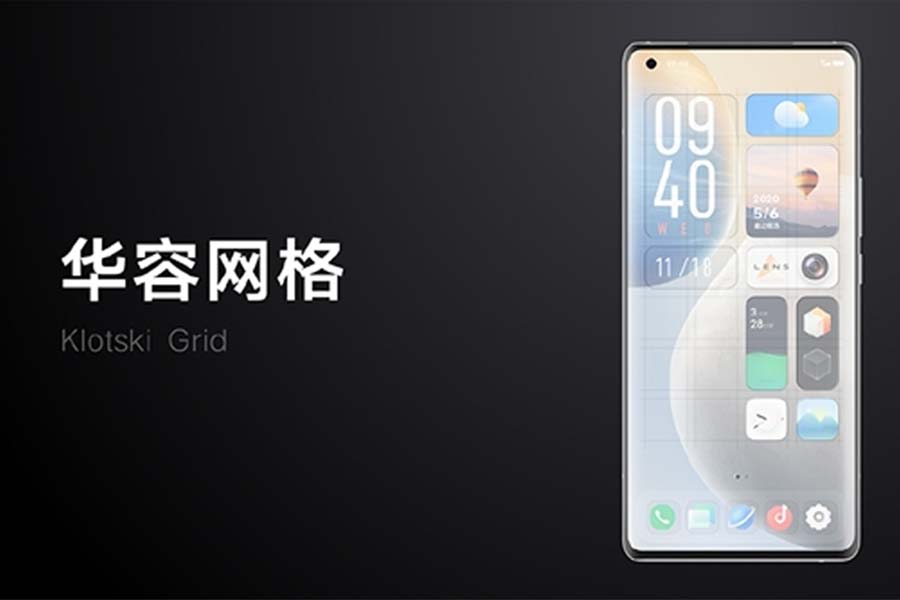
In the hopes of providing a stock Android experience to its users, Vivo has finally unveiled its new UI – the OriginOS. It replaces the highly polarizing FuntouchOS that previously donned Vivo smartphones. OriginOS brings in a complete revamp in terms of optimizations, gestures, and visuals. Vivo claims that the OriginOS will bring in a smooth and secure user experience.
Vivo OriginOS Overview
Visual Flair
The first visual overhaul can be seen on the home screen itself. The desktop grid system is now the preferred widget arrangement style. It is based on the Klotski Grid. Now, users will be able to arrange multiple widgets even if their sizes don’t match.

Moreover, the widgets can also change their looks to relay the required information. For instance, the inbuilt weather app intuitively displays the temperature information. The temperature color card has 90 color values. Thus, you can perceive the difference between warm and cold temperatures.
Furthermore, the message notification system has also received an improvement. The nano alerts show smart notifications in an elegant way. They extract key information from the widgets and then present it in a way that does not disturb you.
Behavioral wallpapers have been introduced by Vivo in OriginOS. However, performance wallpaper is its official name. For instance, you can use the sky background that mimics various weather effects. And then there’s the blooming flower background that showcases complex motions such as the swaying of each individual petals.
Additionally, the wallpapers can also mimic the time of the day. That is, brightest at midday and darkest at night.
Navigation
For navigation, Vivo has added 26 new navigation gestures. And they cover the mainstream operation methods. You can also create your own gesture controls for multitasking and more.

Another nifty addition is the atomic component library. It summarizes atomic components and provides an easy way to retrieve them. Moreover, when icons are dragged from the navigation library into the application interface, it generates small windows for multitasking.
Then there’s the super card pack. A single swipe lets you call the pack no matter what screen you are on. The payment types to be displayed can be customized in the pack. This could come in real handy for quick and easy mobile payments.
- Also Read: Vivo Mobile Price in Nepal [Updated]
OriginOS for Optimized Performance
OriginOS brings Multi-Turbo 5.0. This helps in the core system optimization. Multi-Turbo introduces three technologies – memory fusion, process optimization, and application preloading.
Here, memory fusion allows the allocation of idle ROM space to perform the function of RAM. This leads to a better experience while multitasking since your smartphone will now freeze less often. You can think of memory fusion as a way in which your phone with 8 gigs of RAM will behave as if it has a memory capacity equivalent to 11GB.
Additionally, in-depth control and system resident process optimization help in the overall process optimization. It contributes towards reducing concurrency conflicts and increases concurrency capacity by 20%.
Finally, preloading technology speeds up the app startup time. It intelligently guesses which app you’ll run next and preloads the necessary data. With this, Vivo says the app load time is reduced by up to 40%.
Vivo OriginOS Availability, Eligible Phones
In a Weibo post, the official account for OriginOS has detailed the update schedule for different Vivo and iQOO phones. The company plans to roll out the update in three distinct phases:
A. The first batch of public beta plans (Open beta before Jan 31, 2021)
| Vivo phones | iQOO phones |
| Vivo NEX 3S | iQOO, iQOO Pro |
| Vivo X50, X50 Pro, X50 Pro+ | iQOO 3 |
| Vivo S7 | iQOO 5, 5 Pro |
| iQOO Neo3 |
B. The second batch of public beta plans (Open beta before Chinese New Year 2021)
| Vivo phones | iQOO phones |
| Vivo NEX 3, NEX 3 5G | iQOO Neo |
| Vivo X30, X30 Pro | iQOO Neo 855 version |
C. The third batch of public beta plans (Open beta in Q2 2021)
| Vivo phones | iQOO phones |
| Vivo NEX (dual-screen), NEX (in-display fingerprint), NEX S | iQOO Z1 |
| Vivo X27, X27 Pro | iQOO Z1x |
| Vivo S5, S6, S1, S1 Pro | |
| Vivo Z5, Z5i, Z5x, Z6 |
















![Best Ultrabooks To Buy in Nepal 2024 [Updated] Best Ultrabook Laptops in Nepal 2023 - June Update](https://cdn.gadgetbytenepal.com/wp-content/uploads/2023/04/Best-Ultrabook-Laptops-in-Nepal-2023-June-Update.jpg)
![Best Gaming Laptops in Nepal 2024 [Updated] Best Gaming Laptops in Nepal 2023 - June Update](https://cdn.gadgetbytenepal.com/wp-content/uploads/2023/04/Best-Gaming-Laptops-in-Nepal-2023-June-Update.jpg)


![Best Mobile Phones Under Rs. 15,000 in Nepal [Updated] Best Phones Under 15000 in Nepal 2024 Budget Smartphones Cheap Affordable](https://cdn.gadgetbytenepal.com/wp-content/uploads/2024/03/Best-Phones-Under-15000-in-Nepal-2024.jpg)
![Best Mobile Phones Under Rs. 20,000 in Nepal [Updated] Best Mobile Phones Under NPR 20000 in Nepal 2023 Updated Samsung Xiaomi Redmi POCO Realme Narzo Benco](https://cdn.gadgetbytenepal.com/wp-content/uploads/2024/01/Best-Phones-Under-20000-in-Nepal-2024.jpg)
![Best Mobile Phones Under Rs. 30,000 in Nepal [Updated]](https://cdn.gadgetbytenepal.com/wp-content/uploads/2023/12/Best-Phones-Under-30000-in-Nepal-2024.jpg)
![Best Mobile Phones Under Rs. 40,000 in Nepal [Updated] Best Phones Under 40000 in Nepal 2024 Smartphones Mobile Midrange](https://cdn.gadgetbytenepal.com/wp-content/uploads/2024/02/Best-Phones-Under-40000-in-Nepal-2024.jpg)
![Best Mobile Phones Under Rs. 50,000 in Nepal [Updated] Best Phones Under 50000 in Nepal 2024 Smartphones Midrange](https://cdn.gadgetbytenepal.com/wp-content/uploads/2024/02/Best-Phones-Under-50000-in-Nepal-2024.jpg)
![Best Flagship Smartphones To Buy In Nepal [Updated] Best Smartphones in Nepal 2024 Flagship Premium Samsung Apple iPhone Xiaomi OnePlus Honor](https://cdn.gadgetbytenepal.com/wp-content/uploads/2023/09/Best-Smartphones-in-Nepal-2024.jpg)